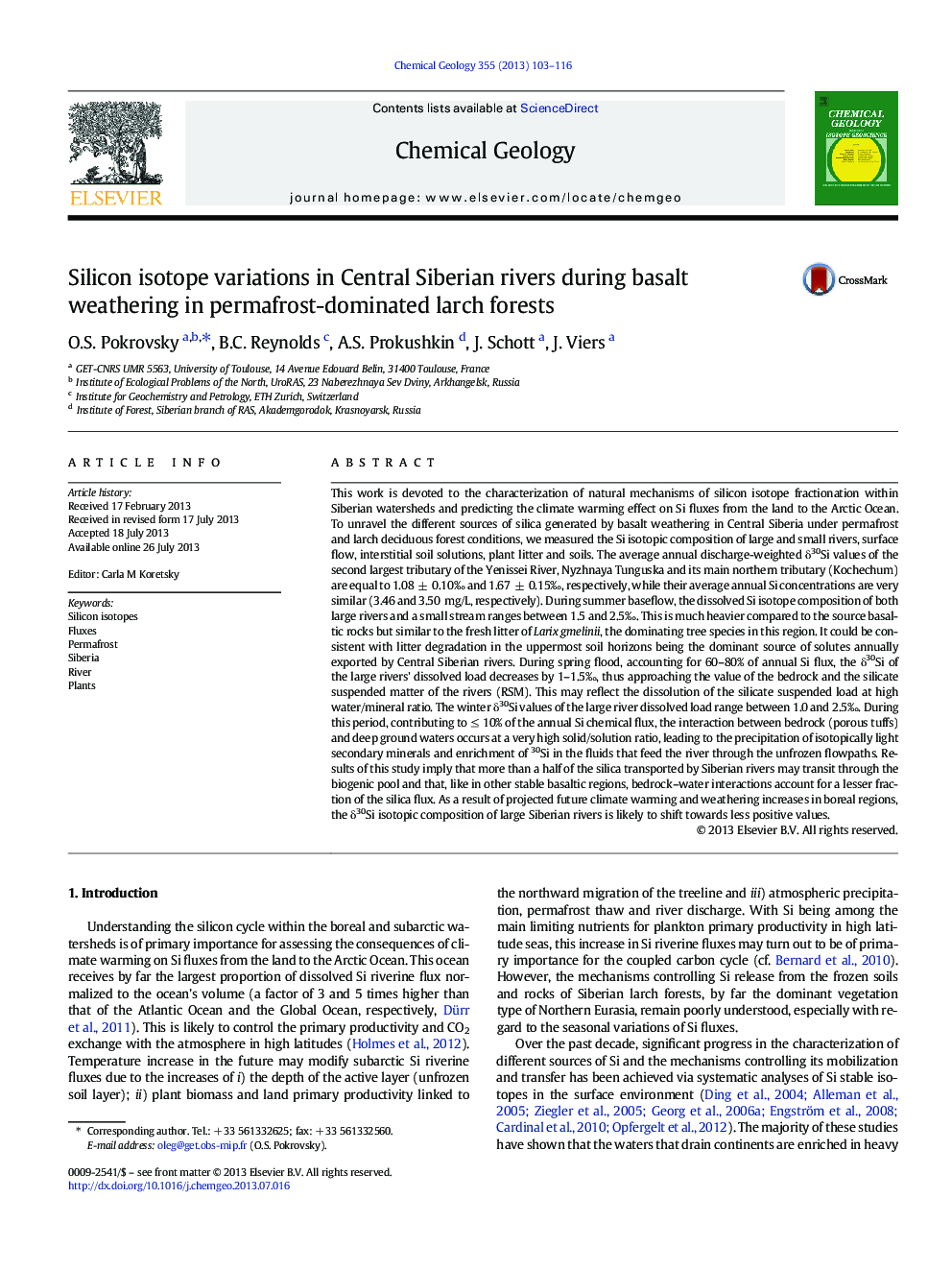| کد مقاله | کد نشریه | سال انتشار | مقاله انگلیسی | نسخه تمام متن |
|---|---|---|---|---|
| 6436794 | 1637614 | 2013 | 14 صفحه PDF | دانلود رایگان |
- Siberian rivers exhibit 1.5-2.0Ⱐδ30Si isotope variation in the course of the year.
- Basalt weathering at low water/rock ratios explains very positive δ30Si in winter.
- River suspended matter dissolution produces light Si during spring flood.
- Plant uptake and secondary mineral formation can explain heavy aqueous Si in summer.
- Climate warming may enrich Siberian river waters by light isotope.
This work is devoted to the characterization of natural mechanisms of silicon isotope fractionation within Siberian watersheds and predicting the climate warming effect on Si fluxes from the land to the Arctic Ocean. To unravel the different sources of silica generated by basalt weathering in Central Siberia under permafrost and larch deciduous forest conditions, we measured the Si isotopic composition of large and small rivers, surface flow, interstitial soil solutions, plant litter and soils. The average annual discharge-weighted δ30Si values of the second largest tributary of the Yenissei River, Nyzhnaya Tunguska and its main northern tributary (Kochechum) are equal to 1.08 ± 0.10â° and 1.67 ± 0.15â°, respectively, while their average annual Si concentrations are very similar (3.46 and 3.50 mg/L, respectively). During summer baseflow, the dissolved Si isotope composition of both large rivers and a small stream ranges between 1.5 and 2.5â°. This is much heavier compared to the source basaltic rocks but similar to the fresh litter of Larix gmelinii, the dominating tree species in this region. It could be consistent with litter degradation in the uppermost soil horizons being the dominant source of solutes annually exported by Central Siberian rivers. During spring flood, accounting for 60-80% of annual Si flux, the δ30Si of the large rivers' dissolved load decreases by 1-1.5â°, thus approaching the value of the bedrock and the silicate suspended matter of the rivers (RSM). This may reflect the dissolution of the silicate suspended load at high water/mineral ratio. The winter δ30Si values of the large river dissolved load range between 1.0 and 2.5â°. During this period, contributing to â¤Â 10% of the annual Si chemical flux, the interaction between bedrock (porous tuffs) and deep ground waters occurs at a very high solid/solution ratio, leading to the precipitation of isotopically light secondary minerals and enrichment of 30Si in the fluids that feed the river through the unfrozen flowpaths. Results of this study imply that more than a half of the silica transported by Siberian rivers may transit through the biogenic pool and that, like in other stable basaltic regions, bedrock-water interactions account for a lesser fraction of the silica flux. As a result of projected future climate warming and weathering increases in boreal regions, the δ30Si isotopic composition of large Siberian rivers is likely to shift towards less positive values.
Journal: Chemical Geology - Volume 355, 26 September 2013, Pages 103-116
